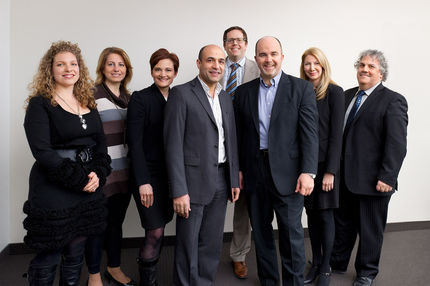New Peer-Reviewed Study Demonstrates Cure Rates of Brachytherapy with Palladium-103
A new peer-reviewed study demonstrates that cure rates achieved with brachytherapy using palladium-103 are better than or equal to traditional surgery for treating prostate cancer. The twelve-year study proves the superior efficacy of brachytherapy, or "seed therapy," for treatment of high- and intermediate-risk prostate cancer patients.
Key findings of the study reveal that high-risk prostate cancer patients treated with brachytherapy using palladium-103 experienced greater success than patients treated with prostatectomy. In fact, high-risk patients treated with seeding showed an 88% cure rate, vs. a 43% cure rate obtained with surgery, at 12 years. Similarly, the results for intermediate-risk patients were also impressive, with 12-year data reflecting a success rate of 89% with seed therapy, vs. a 58% success rate with surgery. In addition, low-risk patients demonstrated comparable results, with those treated with seeds experiencing a 99% success rate, vs. a 97% success rate with surgery, at 10 years.
All brachytherapy patients in the study were treated exclusively with the palladium-103 device TheraSeed(R), manufactured by Theragenics Corporation(R). Independent clinical studies demonstrate that the palladium composition of the TheraSeed(R) device acts faster, and results in significantly fewer complications, than iodine-based seeds.
Brachytherapy is a form of radiation therapy that fights prostate cancer with rice-sized radioactive seeds implanted inside the body. A minimally invasive, usually outpatient procedure, it is typically associated with a lower risk of quality of life implications, such as incontinence and impotence.
The study, "Palladium-103 Brachytherapy Versus Radical Prostatectomy in Patients with Clinically Localized Prostate Cancer: A 12-Year Experience From A Single Group Practice," was conducted by Jerrold Sharkey, M.D., Clinical Research Director of the Urology Health Center and Advanced Research Institute in New Port Richey (Greater Tampa area), FL, and Clinical Assistant Professor of Urology at the University of South Florida. The study is published in the Vol. 4, Issue 1 edition of the journal Brachytherapy.
Topics
Organizations
Other news from the department research and development

Get the life science industry in your inbox
By submitting this form you agree that LUMITOS AG will send you the newsletter(s) selected above by email. Your data will not be passed on to third parties. Your data will be stored and processed in accordance with our data protection regulations. LUMITOS may contact you by email for the purpose of advertising or market and opinion surveys. You can revoke your consent at any time without giving reasons to LUMITOS AG, Ernst-Augustin-Str. 2, 12489 Berlin, Germany or by e-mail at revoke@lumitos.com with effect for the future. In addition, each email contains a link to unsubscribe from the corresponding newsletter.






















































